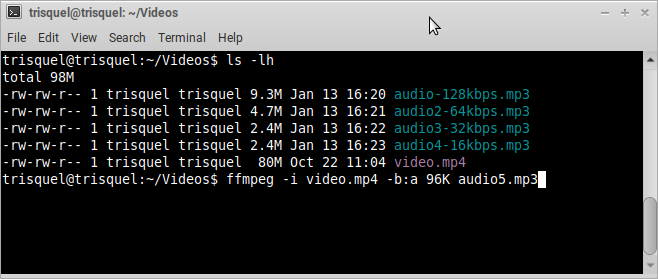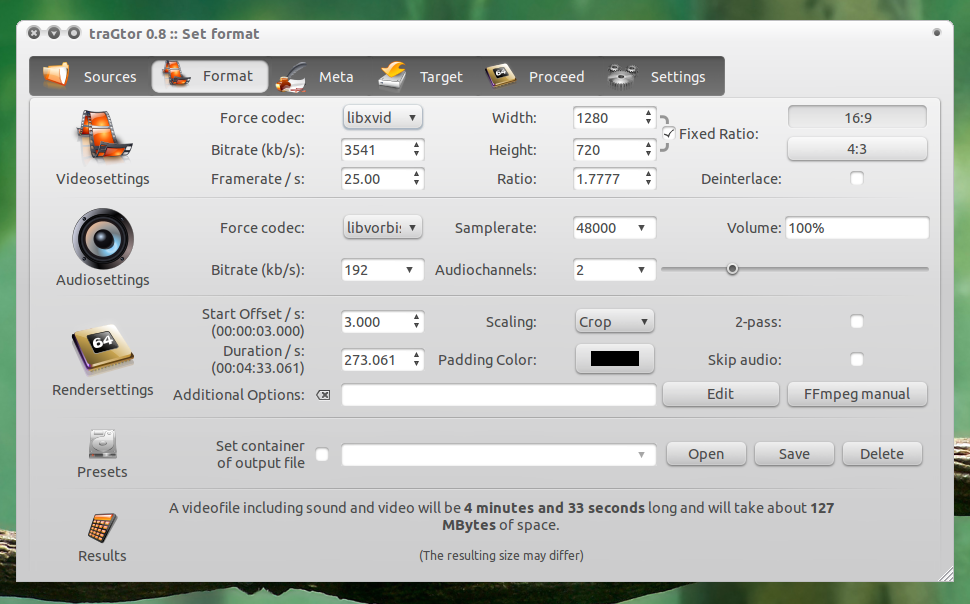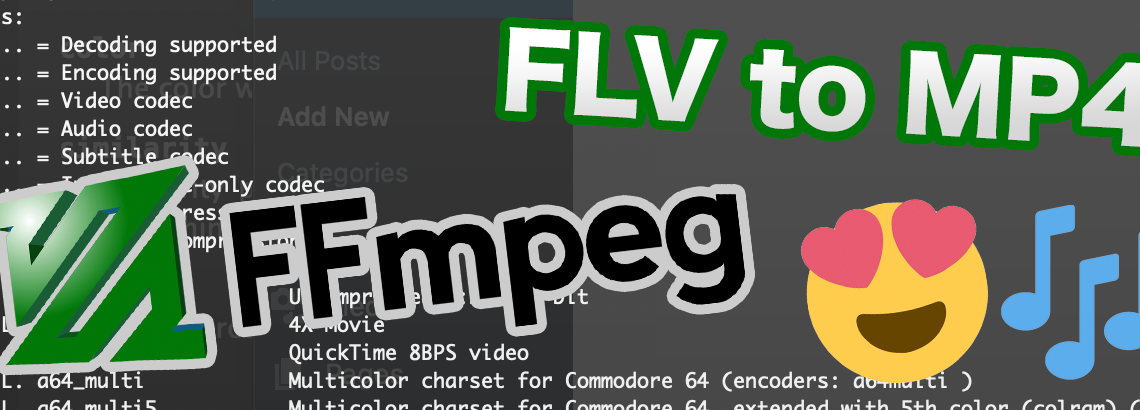

In this case, FFmpeg with re-encode the video and provide it in an mp3 container. and provide the output in an avi file with the newly encoded audio.īut, what if your file contains only audio and no video? Then, its simpler! Just ensure that you have the right extensions and FFmpeg will do the conversion for you.use mp3 audio codec to re-encode the audio.copy the video content as is using the -vcodec copy parameter (no video re-encoding),.read the input file named input_filename.avi that is in an avi media container that holds both the audio and video.ffmpeg -i input_filename.avi -acodec mp3 -vcodec copy output_filename.avi Okay, let’s look at the FFmpeg command line now.

This is a preferable option as we don’t want to use time to re-encode the video when it is not needed. In this exercise, we shall re-encode the audio without changing any of the video settings in the media file. Transcoding Audio using FFmpeg (Change Audio Codecs Without Changing the Video)


Ostsport.TV Adds TVU Networks Ecosystem and Multiple TVU Servers to its Live Streaming Workflow M2A Media awarded five leaves out of five in the DPP Committed to Sustainability programmeĭoCaption Expands LRBox Ancillary Data Platform Product Line Portfolioĭevoncroft Partners and IABM Announce Dissolution of Market Research Joint VentureĭataCore and Symply Launch New On-Set Media Appliance WorldCast announces Germany as the first country to massively roll out SmartFM, taking action to reduce energy costs and carbon footprint Interra Systems’ ORION-OTT Solution Passes Rigorous Foundational Technical Review Sharjah Government Media Bureau prepares for UHD and transforms workflows with EditShare ViewLift Roars into Q4 with New Award Nomination, Conference Keynotes and Key New Clients TMC Partners with TVU Networks for the World’s Biggest Football Competition in Qatar


 0 kommentar(er)
0 kommentar(er)
